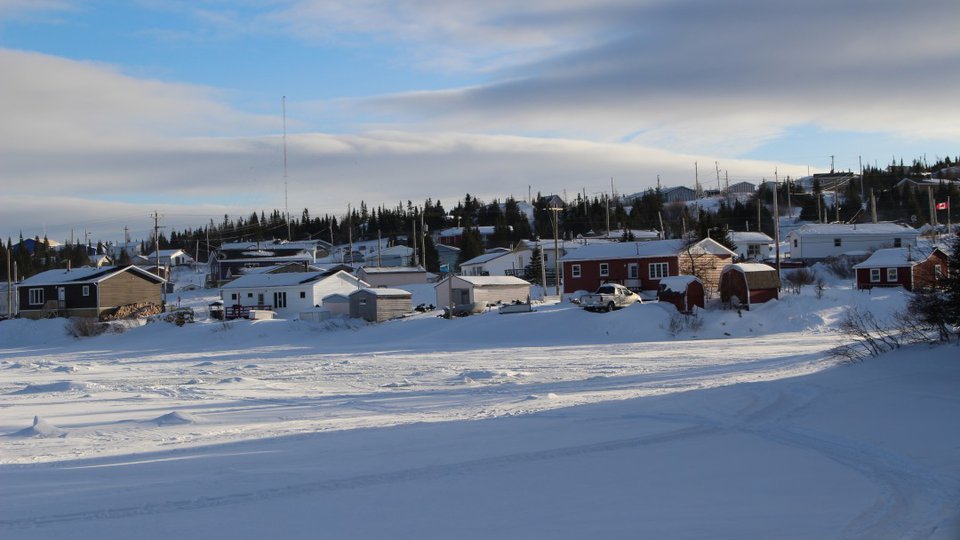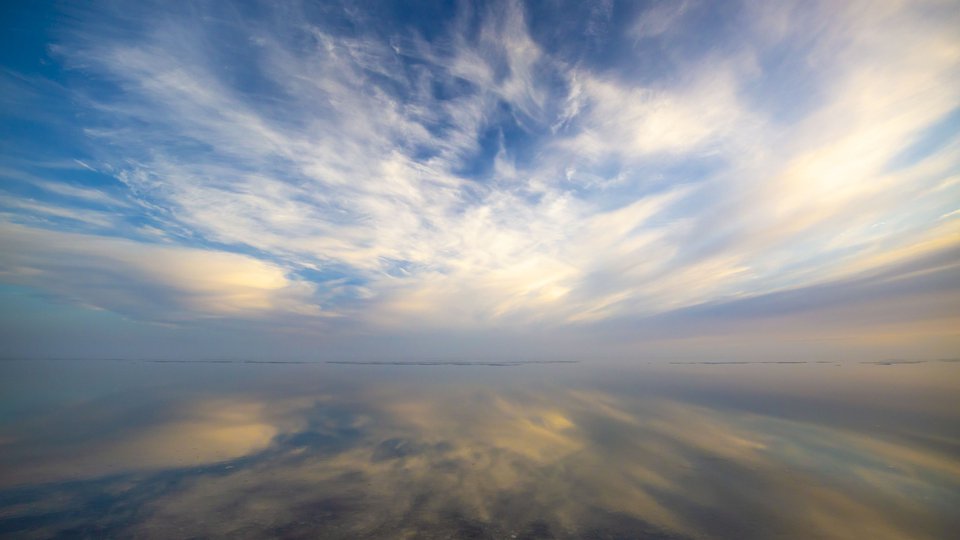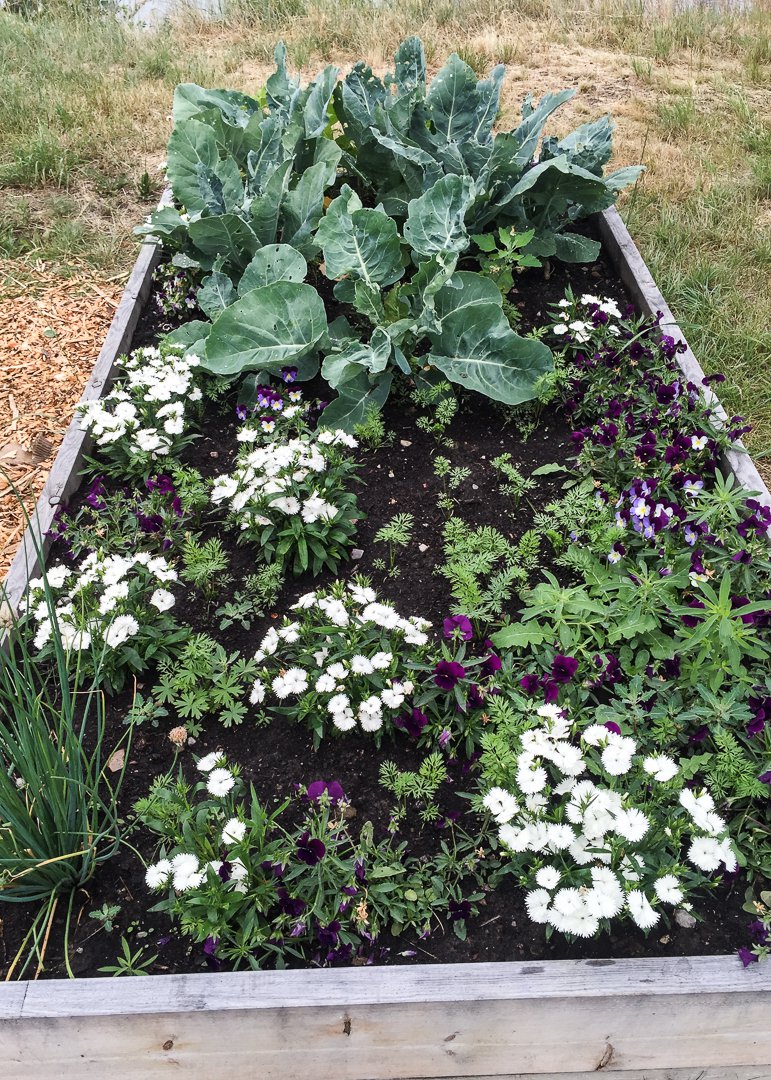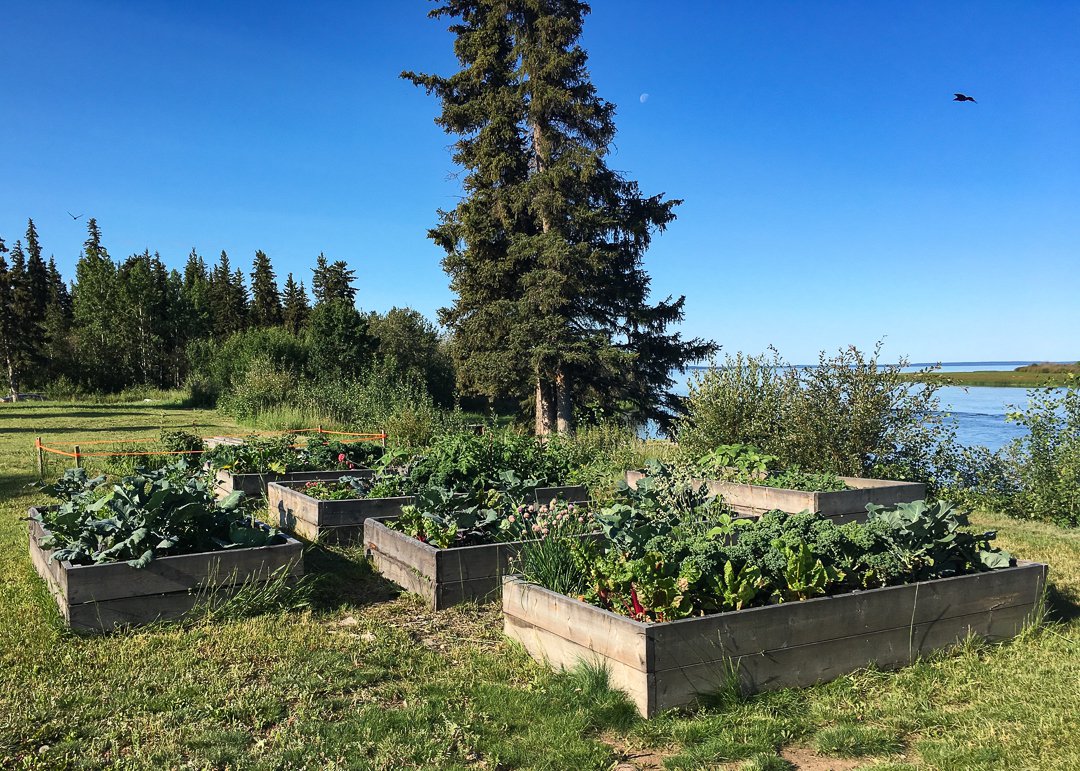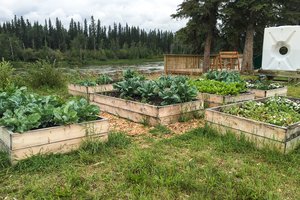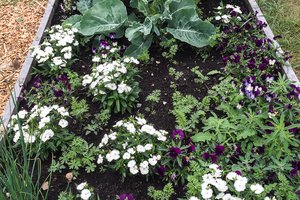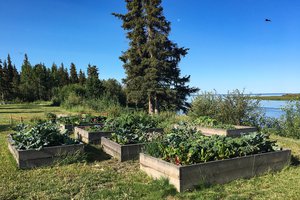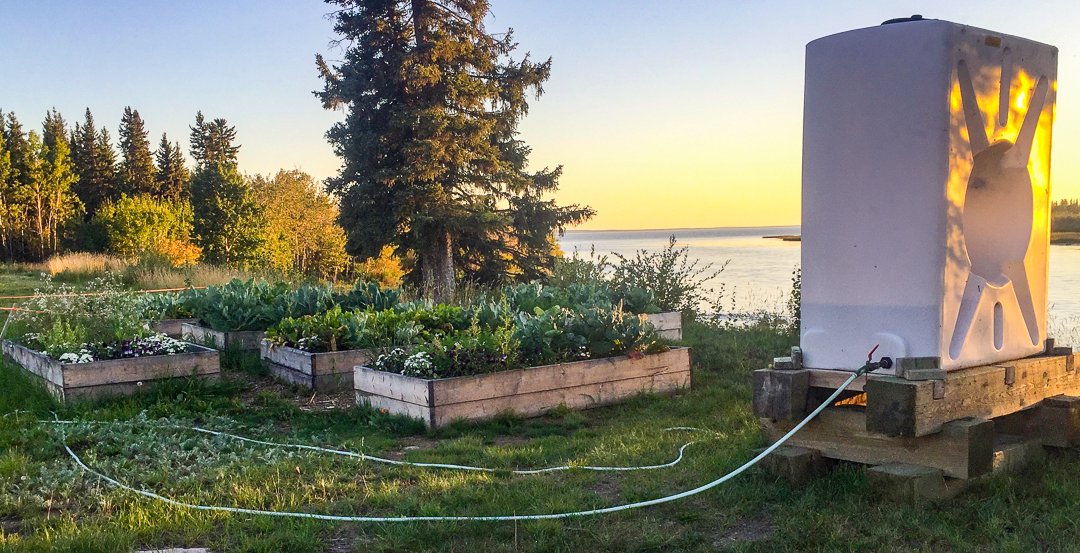
While agriculture may not be what first comes to mind when thinking about Canada's frigid North, food production and small-scale farming are gaining ground in Arctic communities.
Andrew Spring is a researcher at Wilfrid Laurier University, focused on food security and food sovereignty in Northern Canada. He studies how these complex issues intersect with climate change and traditional food systems, helping to 're-imagine' what agriculture could mean for communities in Northern Canada.
Spring has worked with the Ka'a'gee Tu First Nation, the community of Kakisa and several other Indigenous communities in the Northwest Territories to help establish small-scale farming operations that not only help supply food for the community, but also uphold the traditional beliefs of caring for the land. We asked him what the future of agriculture in Northern Canada could look like and what the challenges of further development could be.
Q: How is food insecurity impacting northern communities and how can agricultural operations factor into that?
A: I think we've all seen on the news and various reports the significantly high rates of food insecurity across the North. You can read anywhere from 24-70 per cent in some communities with the national average being somewhere around 8 per cent.
The reasons for that are very complicated, there is a whole laundry list of them. High cost of food is a factor, but it's a bit more complicated than food is expensive, everything is expensive. And of course, that means that communities need jobs to support living in the North.
Having a job means you have less time on the land, and of course being on the land is expensive as well. You have to pay for equipment, tools and gas etc. There is a significant cost to both buying food and getting food from the land.
So the community sees growing food as a way to provide more fresh healthy food to compliment the food that they would get from the land. Agriculture is not the solution. It is a piece of this puzzle that communities want to assemble as they envision what their own food system looks like. So, I don't think it's food security that we’re talking about, it's more so food sovereignty and how communities have this vision of what their food should look like. And a lot of the research we do is helping support communities along that path.
Q: How does climate change factor into this?
A: We can't forget a few things; in the North the climate is changing so rapidly. So we know that the Boreal Forest is a carbon sink and we know that agriculture is traditionally a carbon source. So if you are replacing the forest, which is a carbon sink with a carbon source, this is a double whammy of carbon input. So yes, let’s develop food growing capacity...but let’s do it in a way that we can actually help the traditional food system.
Q: How could introducing more agriculture affect the traditional food system in communities?
A: Ag is always going to be a small piece of the puzzle, but communities will continue to rely on moose, caribou, all sorts of different animals, traditional foods, fish, etc. We need to make sure that if we start increasing the production of grown foods or locally produced foods, we're not actually sacrificing any of that traditional food system. So how can we grow food in a way that actually helps the boreal forest? Maybe actually sequesters carbon? And maybe even protects water and land resources? So instead of sacrificing one for the other, how can they be complimentary?
It speaks to how we are introducing ag into the North. In the South we are very familiar with farms and have this idea that a farm is a field where we grow things, we plow it and there is a barn and there is cows. But in the North I think it's going to look different. it's going to be this combination of forest, forest foods, traditional foods and places where we can grow food, but all in this spirit of taking care of the land.
Q: Can you give me a few examples of what this could look like?
A: Maybe it's bringing the farmers field into the forest and using the forest as this way of growing food, which is something that communities have traditionally done for thousands of years. So, we're thinking of ideas like, can we cultivate wild onions in a patch of forest? Of course, we would have to plant them, and there would have to be some sort of management of this area, but essentially what your trying to do is to bring the food to the community.
[Also] we know that wildfire is increasing in its frequency, and certainly increasing in its intensity and you need to fire safe communities. So [in one community] we’re actually trying to put a farmer’s field inside a fire break so it will remain green, it will be managed by the community. Maybe it will be a place that we could put berries or maybe it’s a place we could put some more potatoes and make it this space that the community can actually use.
Q: How does the colder climate affect crops and the growing season?
A: There are still climatic barriers to agriculture in the North. For sure in the Southern parts of the NWT … they do actually have a pretty good growing season. Certainly you can't grow everything, but you are able to grow a pretty diverse amount of food and that is helped by 24 hours of sunlight in some places.
As you move up of course that window begins to shrink. Another thing you have to think about is as the climate changes, that will increase opportunities to grow food in different places.
Of course you can use other technologies like greenhouses and whatever other tools are available to extend those seasons, but for the most part the tools are there that we can start growing in these communities. There is a greenhouse in Inuvik that is a really good example that you can grow food in most places across the North.
Places that are located on the shield...there isn't a lot of land available and there is a legacy of contaminates in the soils. One of the solutions that those communities have is composting and actually building soils. So in communities we can actually use waste products, like fish waste is a really good example to actually build soil.
Q: What types of crops are they growing?
A: The best things to grow are things you can throw in a stew. We're talking about potatoes root vegetables, maybe some other things, but that's really where ag is kind of starting. So we grow food in communities, but it's very much at a small scale.
Q: What are some of the challenges to developing these systems in communities?
A: There certainly are a lot of challenges. I think first and foremost is that agriculture in the North is not something that has traditionally happened. Certainly you can look back in the history books and see that there has been a long history of agriculture that has usually happened around forts and settlements, and that's how it's been introduced. There are a lot of negative stories and associations with ag in the North. In Kakisa, there are a lot of people who identify residential schools as their introduction to agriculture and there is a lot of negative associations with that. So the work that we do there is actually taking this top down approach to what agriculture could be and digging into this kind of cultural capital of taking care of the land and re-imagining what agriculture could look like.
One of the issues that we’re facing is that a lot of that money that you can access for some of this infrastructure is actually tied to an economic development plan. So if you want to grow food, what is your plan to actually sell that food? And for some communities, sure, the economic developments of selling food, that's certainly on their minds, for other communities it's about subsistence, it's about feeding the community.
So one of the things that we’re working with the community to think about is, if you would to like do that here is that tool, but maybe you can trade it, or maybe you can share it. There are all sorts of tools that the community can use to move food around and maybe this means that fish have value and maybe potatoes have a value and maybe you could actually exchange food. And communities [have] been doing that for thousands of years, so maybe this is just another tool that we can use.
This interview was edited for length and clarity.

